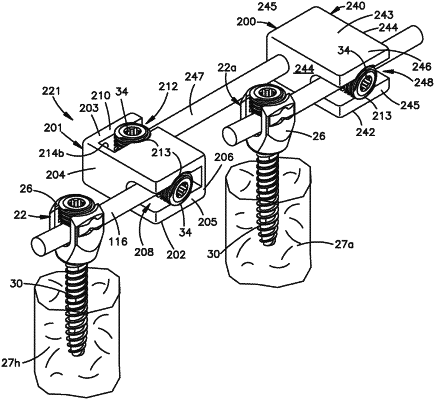| CPC A61B 17/705 (2013.01) | 20 Claims |

|
1. A method of coupling a first spine fixation rod to at least one vertebra and a second spine fixation rod, the method comprising:
receiving the first spine fixation rod in a rod receiving channel, defined by a body of a first connector, such that the first spine fixation rod extends from the body of the first connector along a first direction;
positionally locking the first spine fixation rod in the rod receiving channel such that the first spine fixation rod extends from the body along the first direction;
receiving a rod of the first connector in a channel of a second connector, wherein the rod extends integrally out from the body such that the body and rod together define a one-piece structure; and
coupling the rod of the first connector, via the second connector, to the second spine fixation rod, which is coupled to at least one vertebra that is different than the at least one vertebra to which the first spine fixation rod is coupled, wherein the first connector is not directly connected to any underlying vertebra via any bone anchor that extends through the first connector.
|